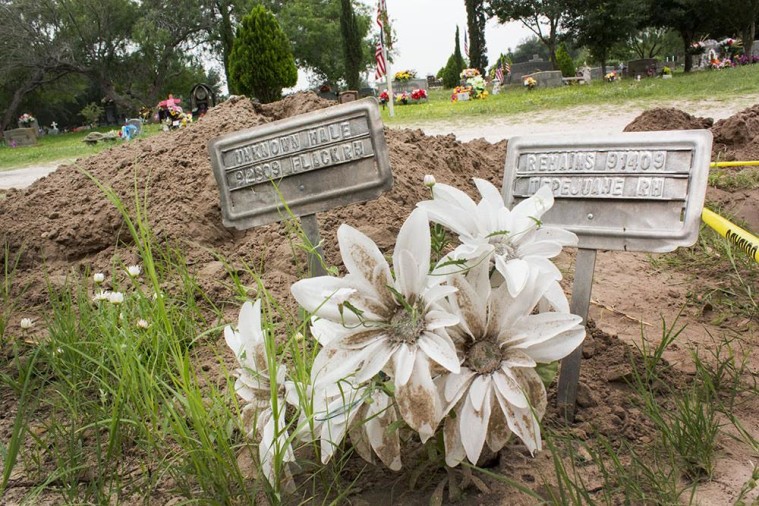New Hope for Identifying Migrant Bodies in South Texas

*Because of a lack of funding at the local level, the bodies of undocumented migrants have been buried without identification. This left unanswered questions for their families and leaves advocates with no information to make public policy. The U.S. Congress has approved $2.3 million for relief to cash-strapped border counties. VL
By Teresa Mioli, Texas Observer
[tweet_dis]In the past seven years, the bodies of hundreds of migrants have been recovered in the Texas borderlands[/tweet_dis], but only a fraction of the remains have been identified or returned to families. Local officials are ill-equipped to deal with the death toll, and the state and federal governments have done little to bolster an underfunded and patchwork system.But human rights activists and scientists are hopeful that things may soon improve. In early June, advocates gathered at the Texas Capitol to highlight new funding for identifying remains as well as legislation that will make death records available to the public more quickly. The advocates also unveiled a new manual to guide local governments in identifying and recovering remains along the U.S.-Mexico border.
In the recently completed legislative session, lawmakers quietly approved $2.3 million in new funding for the University of North Texas Health Science Center and the Texas Missing Persons and Human Identification Program. The funding boost will help identify remains and offer some relief to rural, cash-strapped counties like Brooks County, the epicenter of migrant deaths in South Texas.
“We can help our local law enforcement agencies and those down in the Brooks County area with being able to have better assistance at the scene, laboratory analysis, reports, depositions and expert testimony,” said Luis Moreno, chief of staff to Sen. Juan “Chuy” Hinojosa (D-McAllen).
Forensic scientists involved in the difficult task of collecting DNA and helping families find lost loved ones said the current system is in desperate need of reform.
[pullquote]“In scientific terms, it’s a mess.”-Raquel Rubio-Goldsmith, forensic investigator[/pullquote]
“In scientific terms, it’s a mess,” said Raquel Rubio-Goldsmith, a forensic investigator with the Binational Migration Institute, an immigration study center at the University of Arizona. “We can’t go to Congress and say X number of people are dying because we don’t really know. If we want to make informed public policy, we need to have those numbers.”
Kate Spradley, a forensic anthropologist at Texas State University, works to identify remains found in Texas border counties. Spradley said many counties lack medical examiners or can’t afford to send remains to a county with one. As a result, when an unidentified body is found, many are buried without autopsies or DNA testing, which is required by law.
[pullquote]Eddie Canales, director of the Brooks County-based South Texas Human Rights Center, said 28 bodies and remains have been recovered so far this year in the rural South Texas county.[/pullquote]Advocates also praised Senate Bill 1485 by Sen. Sylvia Garcia (D-Houston). It will make the death records of unidentified persons publicly available one year after their death. Spradley and others at the press conference said the previous waiting period of 25 years makes the identifications of deceased undocumented border crossers extremely difficult.
At the Capitol, Rubio-Goldsmith also announced a new best-practices manual that county officials can use to streamline the recovery and identification process. The manual includes guidelines for what to do when law enforcement and others find bodies and the best methods for collecting DNA, clothing and other evidence found in the field.
Canales is hopeful that the new efforts will help bring closure to families with missing loved ones.
[tweet_dis]“Human beings shouldn’t be dying at the border,”[/tweet_dis] Canales said. “And human beings need to be identified and they need to be found.”This article was orginally published in The Texas Observer.
[Photo by Jen Reel, courtesy of The Texas Observer]

